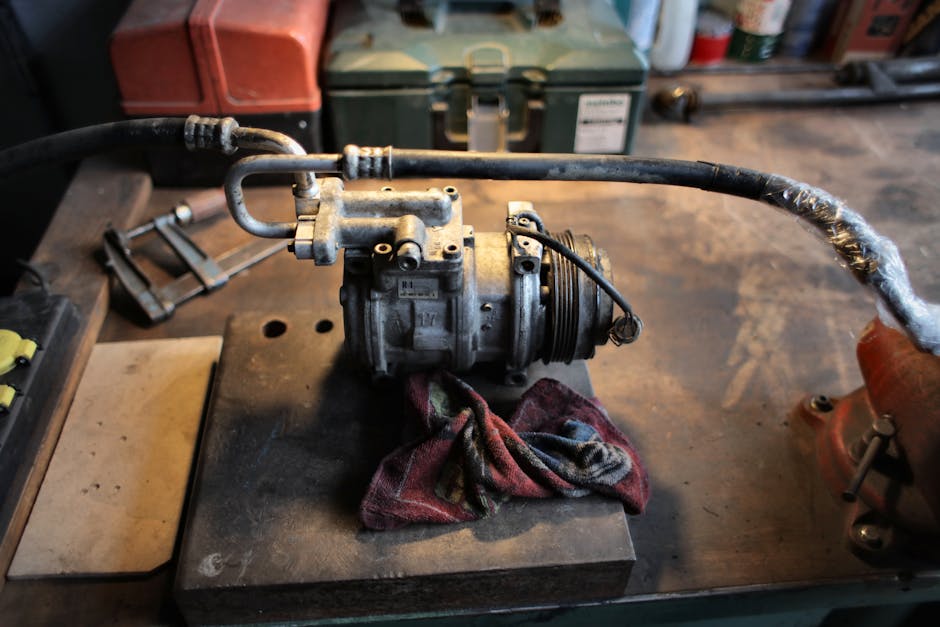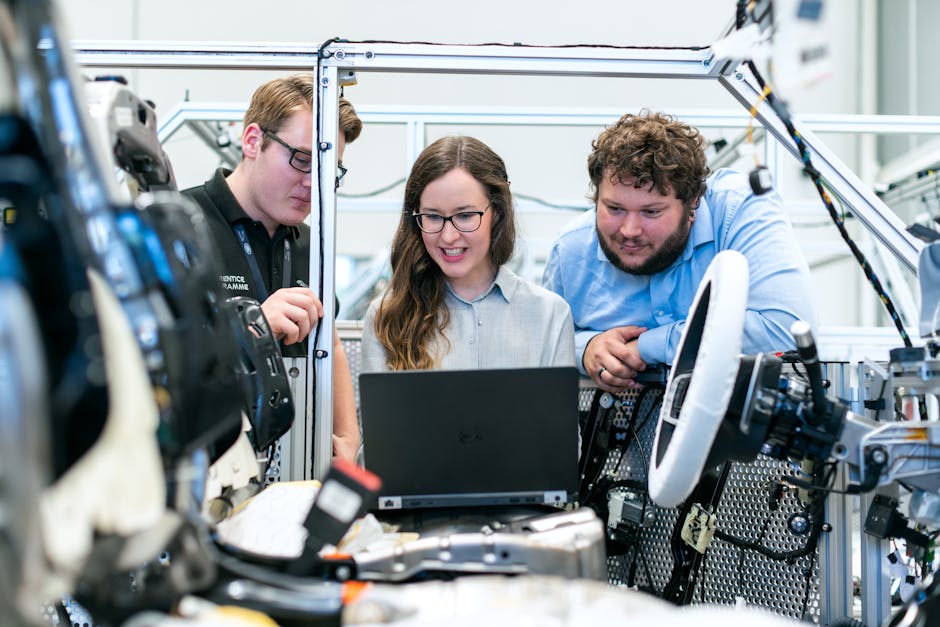Automotive Technology
In our digital era, people have become increasingly dependent upon technology for every aspect of their lives. From work to personal life, everyone seems to be using software, apps, or gadgets for something. This is especially true in the automotive industry where engineers are constantly creating new ways to improve efficiency, safety, and performance of your vehicle!
Automobiles contain lots of different components that work together to help it perform its function. These components range from the engine to the navigation system and everything in between! The term “engineer” means someone with a degree in engineering so incorporating those skills into the workplace is not too uncommon.
However, what many don’t know is that being an engineer isn’t just designing cars and engines but also taking part in projects that focus more broadly on the way vehicles operate. Some examples include developing autonomous vehicles, improving car technologies such as telematics (driver assistance systems) or self-driving features, or working on things like energy recovery systems or hybrid propulsion systems.
These types of projects can easily get lumped under the umbrella of “automotive technology,” so we decided to make the distinction and describe them as such. By including the word “technology” in the name, it makes it clear this area is about much more than just cars!
This article will go over some basics of automotive technology as well as talk about some areas within the field that are unique and interesting.
History of automotive technology

Over the past century, cars have been evolving at an incredible speed. New technologies are being incorporated into car designs with every new model year! For example, advanced computer systems control everything from engine functions to navigation tools.
Many people associate this technological growth with things like touchscreen interfaces, GPS navigational aids, and smartphone-like devices that access internet content through Wi-Fi or cellular connections.
However, there’s another area of vehicle innovation that gets less attention – automotive technology. To understand what it is, we need to look back at its history.
Automotive technology can be categorized into three main areas: ergonomics, engineering, and maintenance. Ergonomic technology improves your car’s interior comfort by ways to reduce muscle fatigue and increase body temperature while in use. Engineering includes gadgets and gizmos such as radars, digital gauges, and computers. Finally, maintenance equipment helps keep your car working longer including oil changes, air filters, and test kits for fluid levels and composition.
Engine technology

Recent developments in engine technology aim to improve fuel efficiency by altering how efficiently your car gets moving. These changes are typically focused on reducing drag, increasing torque, or both. Reducing drag is an interesting tactic that has seen significant success over the past few years.
Reduction of drag can be done through different methods such as modifying the shape of the vehicle or replacing materials that create friction when the vehicle moves. By doing this, less energy is wasted while traveling so your car will get you where you need to go more quickly with the same amount of power!
By changing the shape of the vehicle, engineers have the opportunity to develop what are called aerodynamic vehicles. These cars are designed to use various shapes and features to reduce air resistance which decreases drag. Some of these modifications include adding curved sides, bulking up the back end, and using glass instead of plastic for the roof.
Engineers also use lightweight materials for components of the vehicle, including the frame and bodywork. While some of these additions may increase weight slightly, most people find it easier to handle than steel or heavier metals.
Increasing torque is another way to maximize fuel economy. Torque is the push-pull force that comes from muscles working together to move a part of the vehicle. In other words, if you were sitting down and wanted to get out of the chair, you would apply torque by pushing yourself away and then pulling forward with greater strength.
Transmission technology

When you put your car in gear, you are using a transmission. This is what allows your vehicle to move! Most people know that there are three main components of a standard automatic transmission: fluid, valves, and gears.
However, many people do not realize that the type of gear used to connect these parts changes depending on the vehicle model. For example, some vehicles use “dog-legged” first or second (also known as helical) gears. These gears rotate at a slower speed than normal parallel gears but can transmit more power since they are close together.
Other vehicles have worm gears which slowly spiral up or down within each other. Worm gears were popularized in automotive transmissions during World War II when space was limited. Due to this limitation, engineers had to find new ways to pack lots of horsepower into a small space!
Interchangeable clutch plates are another component of a transmission. These discs can be switched out and replaced when they wear out or cause too much friction.
Why should you be interested in transmission technology? If you love cars, then it is important to understand how engines work and how different engine types work. But if you want to take things one step further, then learning about automobile engineering is needed.
This includes knowing how automated transmissions function so that you can effectively repair or modify them yourself.
Different types of brakes

Another important part of any car is its brake system. There are three main components to most cars these days, including automatic braking systems!
The first is disc brakes. These use an integral rotor that rotates with the wheel to create friction between it and the surface being braked. This creates extra drag, or resistance, which slows down the vehicle.
Discs can be solid, made out of ceramic or carbon fiber, or they can be composite, using both metal and plastic as parts. They’re usually much more efficient than previous technology, which used steel or copper discs in addition to the wheels!
Next comes drum brakes, which use a rotating cylinder attached to the back of the wheel that compresses a fluid before applying force to the surface of the wheel. These need to be adjusted frequently because they can leak and wear out over time.
The third type of automotive brake we will discuss here is hydraulic. These work by pumping up liquid (usually oil) until it reaches the piston at the very end of the brake pedal. Once there, the pressure pushes against the other side of the piston, creating friction and slowing down the vehicle.
Suspension technology

The term suspension comes from the Latin word suspens, which means to hold back or keep in place. In automotive engineering, you will often find that engineers use this knowledge of Latin to create new features!
Suspensions are an important part of any car because they influence how comfortable your ride is. They help prevent your vehicle from shaking too much during driving. This feeling is called comfort.
By reducing vibrations, suspensions also increase handling performance. More agile cars feel better to drive because the body doesn’t shake as much while being driven around.
Vehicles with more advanced technologies include active suspension systems (ASS). These have sensors that monitor the wheel position very closely and then control hydraulic motors and/or springs to eliminate vibration.
Engineered into the suspension system are shock absorbers. There are two main types: spring-damper units and fluidic dampers. As we mentioned before, both improve the comfort level by lessening vibrational effects.
Spring-damper units work by using a solid piece of steel or aluminum to store energy when the car hits bumps or drops. Then, it releases this stored energy slowly so your seat stays firm and you do not get bounced around too much.
Fluidic dampers contain liquid instead of gas like a normal damper.
Road conditions and how they affect your car

Changing road conditions can be tricky at times. That is why having adequate automotive technology in place to help you determine what changes are needed, and when to make them, is so important.
Some technologies check for warning signals that indicate an impending mechanical failure or poor driving condition. If these get triggered, then the manufacturer has informed us about that part of the vehicle being close to failing.
This could motivate people to do their best to preserve the functioning parts as much as possible until it’s too late. The same goes for drivers who want to remain safe by knowing which situations require extra caution and action.
Research shows that most accidents happen due to driver error not mechanic error. By educating yourself about the cars you drive and how they work, you reduce the risk of accident caused by human error.
Tire strength and wear

The average car today has about 30k miles on it! This is because automakers have made cars that require longer periods of time to completely lose their initial appeal. With each passing year, people become more familiar with your vehicle, which helps it retain value.
However, this also means that your vehicle will spend more time under heavy load- just like you would if you own a house!
As vehicles get older, tire manufacturers begin to reduce their grip or traction in order to save money. These are called softening compounds and typically go into the tread area of the tire.
This is why most drivers experience tires that feel looser and less durable as they age. Because these tires no longer hold up well, people often switch brands, which only adds to the depreciation of your current set of wheels.
Fortunately, there are ways to keep your automobile running for a while! If you notice significant drops in performance, take preventative action by stocking up at your local automotive shop.
They can test and replace your current tires, which may be due to poor quality materials or lack of maintenance. Make sure to do research before buying new ones so you know what size fits your vehicle and what brand is the best overall choice.
Car body structure

In this module, you will learn about car body structures! You will also learn what all of these parts do for your car, how they are used in different types of cars, and which ones are important to know as an automotive technician or engineer.
The chassis is probably the most basic part of every vehicle. The chassis is just the frame that holds everything else up!
Chassis components include things like steel rails that form the skeleton of the vehicle, suspension systems that allow the wheels to move up and down, control arms that connect the wheel to the rail, and tie rods that connect the two parallel rails together

0 Comments